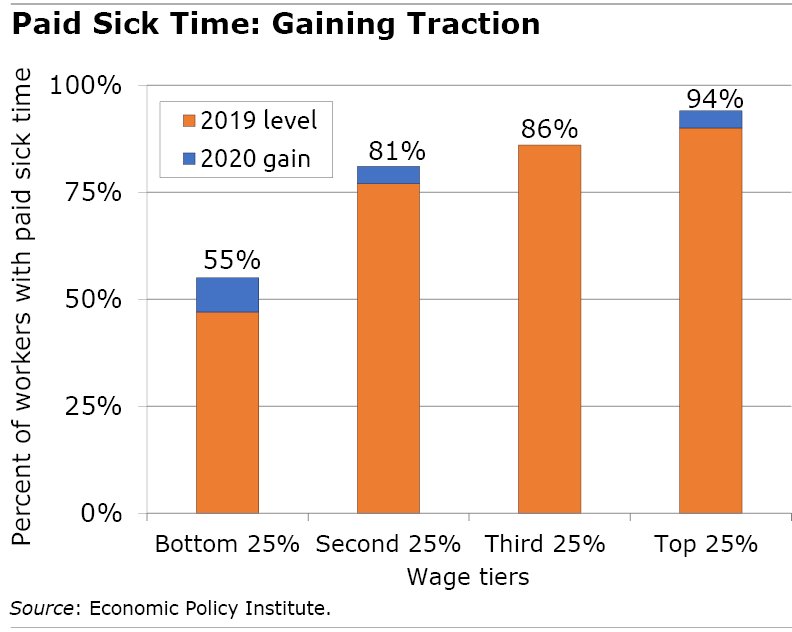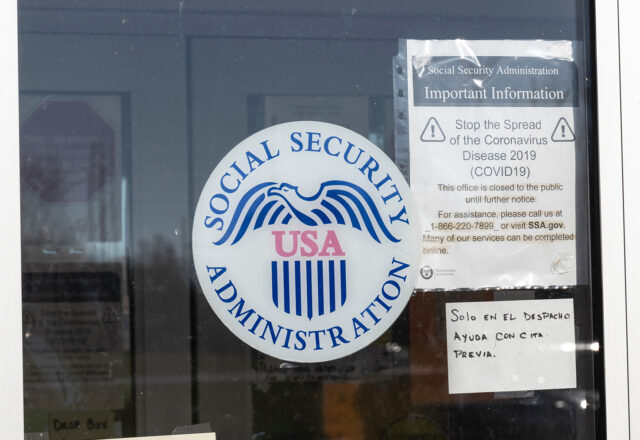
Paid Sick Time Spreading in the COVID Era
The pandemic has done good things for paid sick time.
Today, 77 percent of all employees in the private sector get paid time off for short-term illnesses and preventive medical care. That’s a modest four points higher than in 2019 but at least it’s going in the right direction.

However, coverage remains low at the bottom of the wage scale where workers are much less likely to have any type of employer benefits. Just 55 percent of workers with earnings in the bottom 25 percent of all workers receive paid sick time, according to a 2022 report by the Economic Policy Institute. Even their coverage has increased – from 47 percent prior to the pandemic – but they’re still trailing far behind everyone else.
The overwhelming majority of public-sector workers and the highest-income employees in the private sector already have paid sick time. Some of the lowest coverage rates are for workers at small private employers like restaurants and local retailers that argue the policies are too costly.
To protect Americans without sick leave from COVID, the Families First Coronavirus Response Act required employers with fewer than 500 workers to pay for it. After the federal mandate expired at the end of 2020, there have been a couple of reasons for the increase among private-sector workers, said Elise Gould, a senior economist at the Economic Policy Institute.
First, 13 states and numerous local governments have passed sick leave policies in recent years. Three of those states have enacted laws since 2019 – Colorado, New Mexico and New York – according to the National Partnership for Women and Families.
More than 90 percent of private-sector workers in California, Oregon and Washington and more than 80 percent in New England have paid sick days. Now, the mandates are spreading inland to places like Pittsburgh and Allegheny County in Pennsylvania; Duluth and Bloomington, Minnesota; and Dallas and San Antonio, Texas.
The tight labor market has also forced employers not only to increase their wages but to offer more benefits to attract workers, Gould said.
But geographic coverage is still very uneven and big disparities persist between the highest- and lowest-paid workers. The solution, said the Economic Policy Institute, is a national mandate for all workers to provide economic security and to reduce the transmission of COVID.
Squared Away writer Kim Blanton invites you to follow us on Twitter @SquaredAwayBC. To stay current on our blog, please join our free email list. You’ll receive just one email each week – with links to the two new posts for that week – when you sign up here. This blog is supported by the Center for Retirement Research at Boston College.






